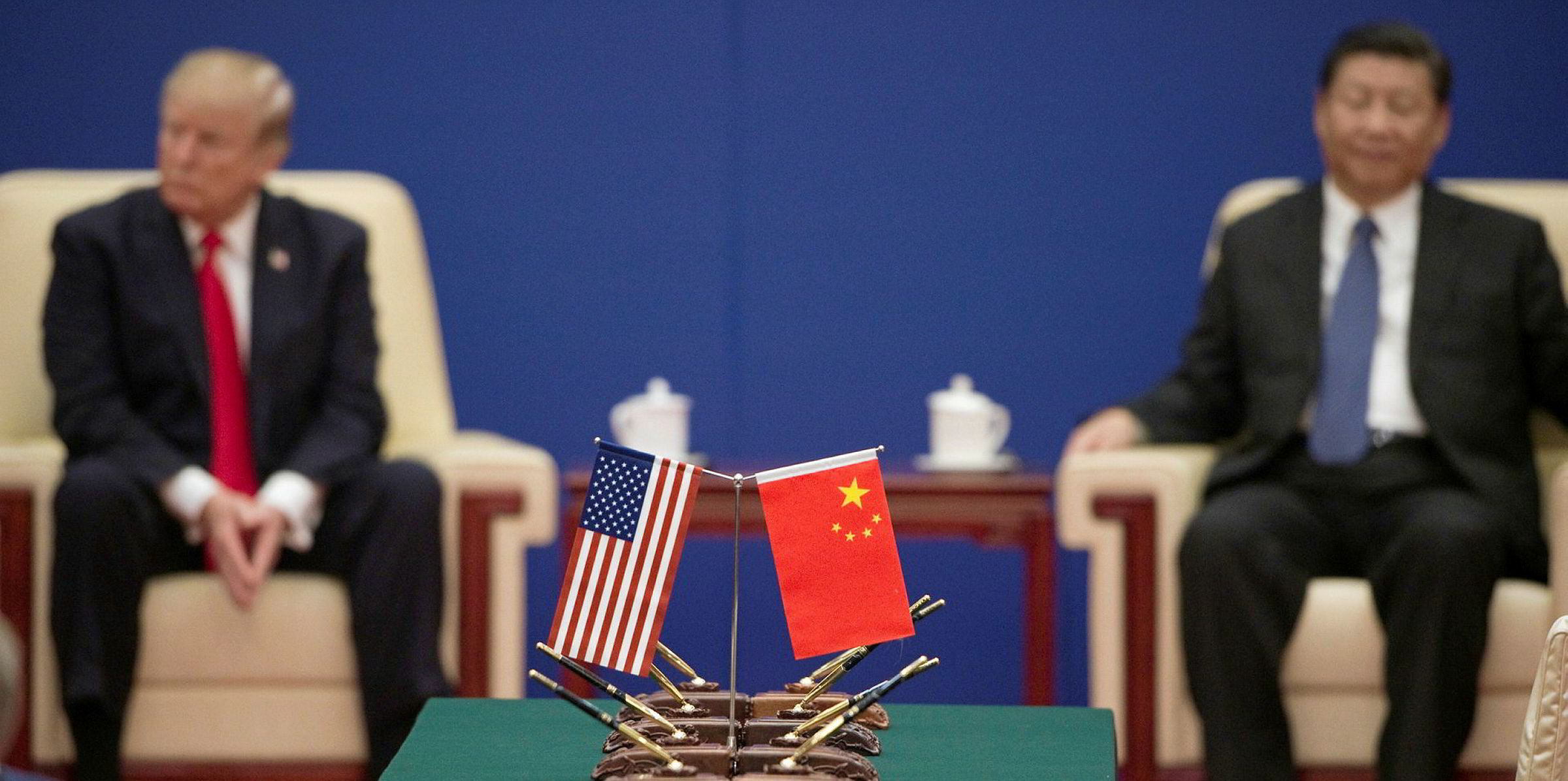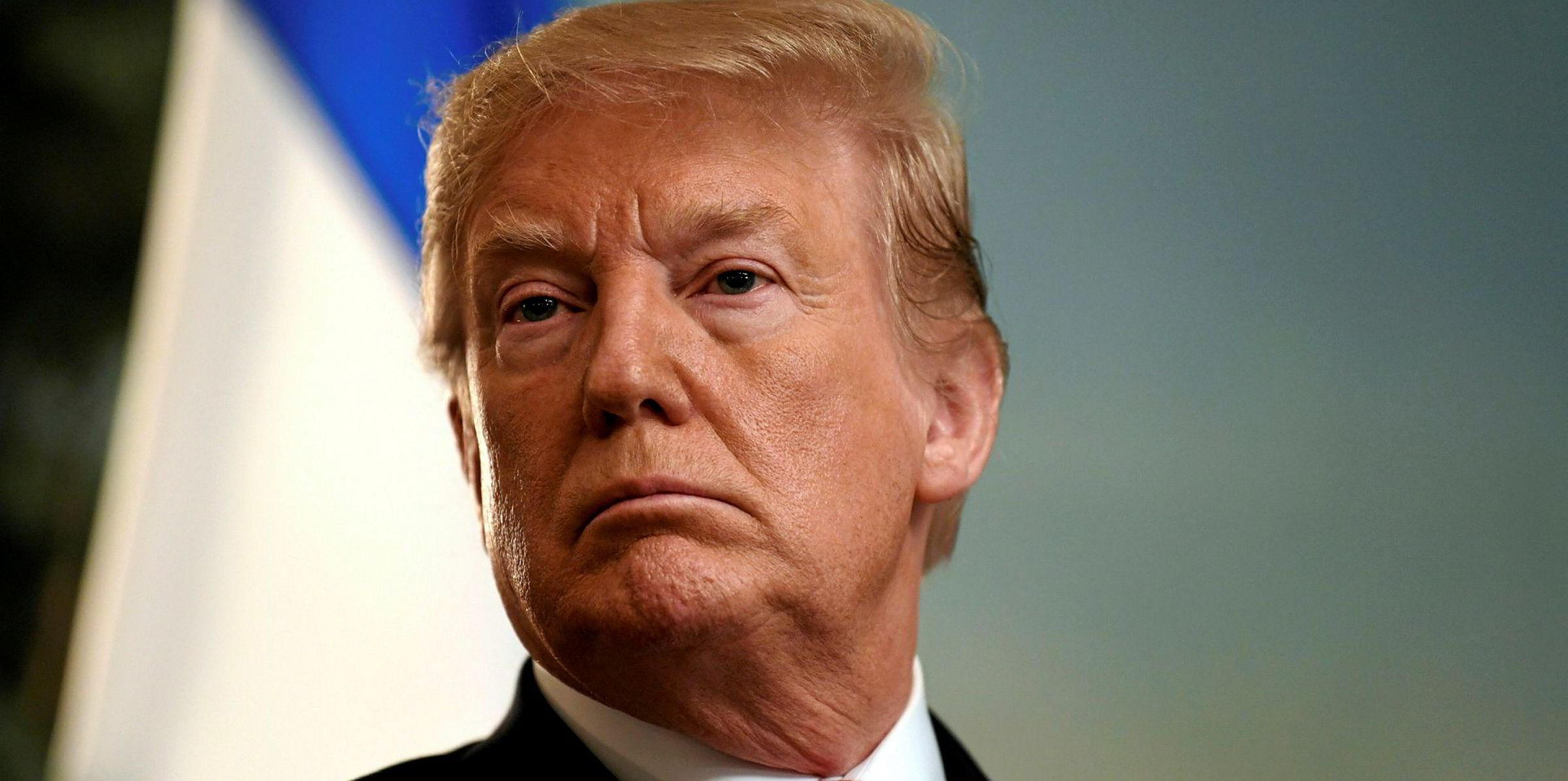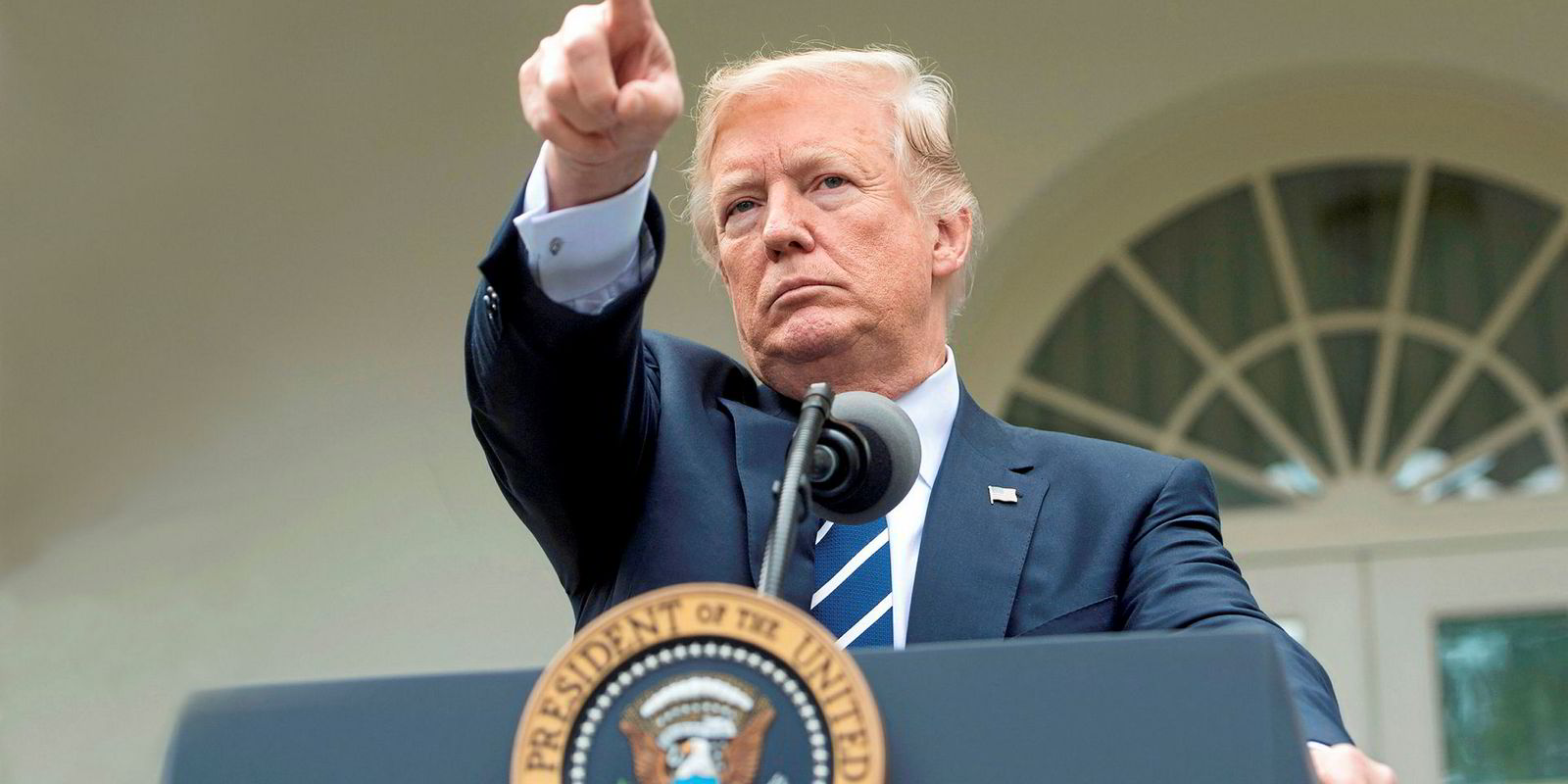Donald Trump’s threats to raise tariffs on $200bn worth of Chinese goods from 10% to 25% this coming Friday are just that, says an Asia-based shipping industry analyst.
“At the moment they are just threats, and it’s just part of the negotiation tactics between the US and China,” Ralph Leszczynski, Banchero Costa’s head of research in Singapore told TradeWinds.
“ The Americans are trying to further increase pressure on the Chinese, as China is reportedly refusing to give in on some of the US demands on issues such as government subsidies to state-owned enterprises.”
However, says Leszczynski, w hat it does say though is that maybe they are probably not as close to an agreement as we thought.
“China’s top trade envoy Liu He is expected to return to Washington this week for what was thought to be the final round of trade negotiations - now this whole ‘trade war’ could perhaps drag on for longer than we hoped for,” he added.
“Let's hope not, as an extended trade war is generally negative for shipping - preventing a resumption of US exports of soybeans, LNG or oil to China, and generally affecting negatively the Chinese economy which has an indirect impact on the country's iron ore and coal demand.”
Other industry analysts fear that Trump’s latest tweets could trigger retaliatory tariffs by Beijing that impact crude oil and LNG trade flows.
China does not impose tariffs on US crude imports, and implements a 10% tariff on US LNG.
A tit-for-tat escalation, as seen in 2018, could mean that Beijing imposes a 25% tariff on both US LNG and crude imports in response to Washington.
US crude exports to China could once again become collateral damage in the trade dispute, as they did when the conflict heated up in July, reported Platts quoting Washington-based ClearView Energy Partners.
“The standoff poses significant risks to the US energy sector,” Kevin Book, managing director of Washington-based research firm.
“US energy companies could continue to face first-order risk from escalating tariffs and countermeasures, second-order risk from new barriers to market development and tertiary risk from trade frictions that could erode global energy demand,” he said in a note to clients.
Risks are now said to be higher now for US LNG exporters and LNG terminal developers hoping for a thaw in trade relations.
ClearView said prior Chinese retaliation had targeted hydrocarbon exports, including LNG, raising the possibility that further retaliation could ramp up Chinese LNG tariffs from the current 10% level, reported Platts.





